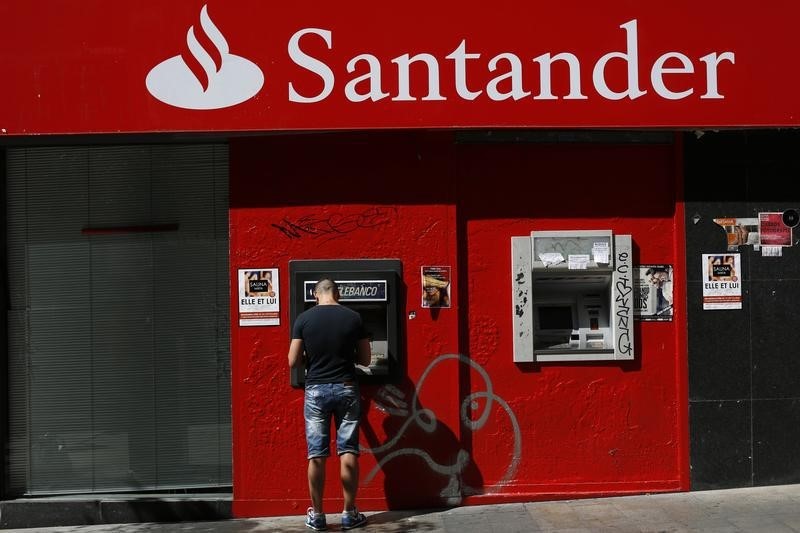By Jesús Aguado
MADRID (Reuters) - Santander (MC:SAN) is expected to earn the dubious distinction of being the only bank to fail the Federal Reserve's annual health check for three years running, despite efforts to improve controls at its U.S. unit, banking sources and analysts say.
Lenders this week submitted their capital and risk management plans to the central bank, which is due to publish results by the end of June.
For Santander its underperforming U.S. business has been a long-time embarrassment and its chairwoman Ana Botin vowed in January to fix it within two years, after which she would consider selling it.
Yet any disposal will be tough while Fed standards are unmet, meaning Santander can't access the capital to invest in its bigger businesses in Spain, Brazil and Britain. And it can't even draw a dividend from the unit in the meantime because of Fed stipulations.
The Spanish bank had in 2013 set itself the objective of doubling U.S. profits to $2 billion by 2016, but last year it scaled down its ambitions and no longer has any earnings target for the unit, which booked a 678 million euro ($771 million) profit last year.
The bank has hired a new local chairman and is investing about $170 million a year to reorganize a complex structure, partly a hangover from the acquisition of Sovereign in 2009, and address reporting gaps.
The issues lie not in its capital levels themselves, which surpass the minimum required by the Federal Reserve, but in the bank's internal risk controls and the lack of integration of its multiple U.S. activities under a single holding company.
Santander, which makes around 8 per cent of its profits in the United States, acknowledges much remains to be done.
"For us what is important is to see the Fed recognizing that we are making progress towards resolving our weaknesses," Santander Chief Financial Officer Jose Garcia Cantera told Reuters in a phone interview last month.
He declined to say whether the bank expects to pass the test this year.
DIVERGENT VIEWS
People familiar with the situation say the fact that Santander and U.S. watchdogs have had recent diverging views on accounting issues relating to provisions and charges passed by the bank bodes ill for the stress tests.
Santander Consumer USA (SCUSA), the bank's U.S. consumer finance business, last month delayed filing its annual report to the Securities and Exchange Commission after being forced to revise the way it accounts for some credit losses.
"The latest problems show that it will simply take them more time to fix the bank in the U.S.," a banker familiar with Santander's U.S. situation said.
Santander is not the only European lender which has found it hard to meet U.S. regulatory standards, but peers like Deutsche Bank (DE:DBKGn), which failed the Fed's tests in 2015, seem better placed to succeed this time around, analysts say.
Beyond the reputational damage of a third failure, not only would Santander's U.S. units be unable to pay a dividend to their Madrid-based parent, there is also an effect on its profitability, with local costs growing at a faster pace than revenue last year.
"Santander has seen management changes in its U.S. subsidiary and costs have risen owing to regulatory pressures," said Nomura analysts in a note to clients. "The latest developments could lead to concerns that such costs may continue to grow."
Santander expects regulatory costs to come down, but not in the short term. "Once we have the confirmation that we are on the right path, our goal is to gradually invest less money and adjust the cost base in the U.S.," Garcia Cantera said.
($1 = 0.8791 euros)
